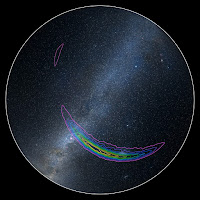LIGO Detects Gravitational Waves
For the first time, scientists have observed ripples in the fabric of spacetime called gravitational waves.
Watch the announcement press conference at the National Science Foundation:
This discovery confirms a major prediction of Albert Einstein's 1915 general theory of relativity and opens an unprecedented window onto the cosmos.
A Special Report by the National Science Foundation on the discovery of gravitational waves by LIGO.
Gravitational waves were detected by the two LIGO detectors in Hanford, Washington and Livingston, Louisiana, United States, at 5:51 am EDT (0951 UTC). The waves were generated during the final moments of the merger of 2 black holes resulting in a single, massive, rotating black hole. Even though such a merger was predicted to happen, it was never observed before.
The merger of the two black holes happened more than 1 billion light-years away. (definition of a light-year, use this calculator to convert light-years to miles.)
Why is this discovery so important? Gravitational waves tell us a lot about their cataclysmic origins. They offer a unique way to look deep into the past and observe cosmic events that happened a very long time ago. Gravitational waves provide information about the nature of gravity that we wouldn't be able to get any other way. With this observation, LIGO opens a new window through which we can study the cosmos.
Data release for the GW150914 Detection event.
A lot more is at LIGO's Detection Portal.
Image: LIGO/Axel Mellinger
This discovery confirms a major prediction of Albert Einstein's 1915 general theory of relativity and opens an unprecedented window onto the cosmos.
A Special Report by the National Science Foundation on the discovery of gravitational waves by LIGO.
Gravitational waves were detected by the two LIGO detectors in Hanford, Washington and Livingston, Louisiana, United States, at 5:51 am EDT (0951 UTC). The waves were generated during the final moments of the merger of 2 black holes resulting in a single, massive, rotating black hole. Even though such a merger was predicted to happen, it was never observed before.
The merger of the two black holes happened more than 1 billion light-years away. (definition of a light-year, use this calculator to convert light-years to miles.)
Why is this discovery so important? Gravitational waves tell us a lot about their cataclysmic origins. They offer a unique way to look deep into the past and observe cosmic events that happened a very long time ago. Gravitational waves provide information about the nature of gravity that we wouldn't be able to get any other way. With this observation, LIGO opens a new window through which we can study the cosmos.
Data release for the GW150914 Detection event.
A lot more is at LIGO's Detection Portal.
Image: LIGO/Axel Mellinger

